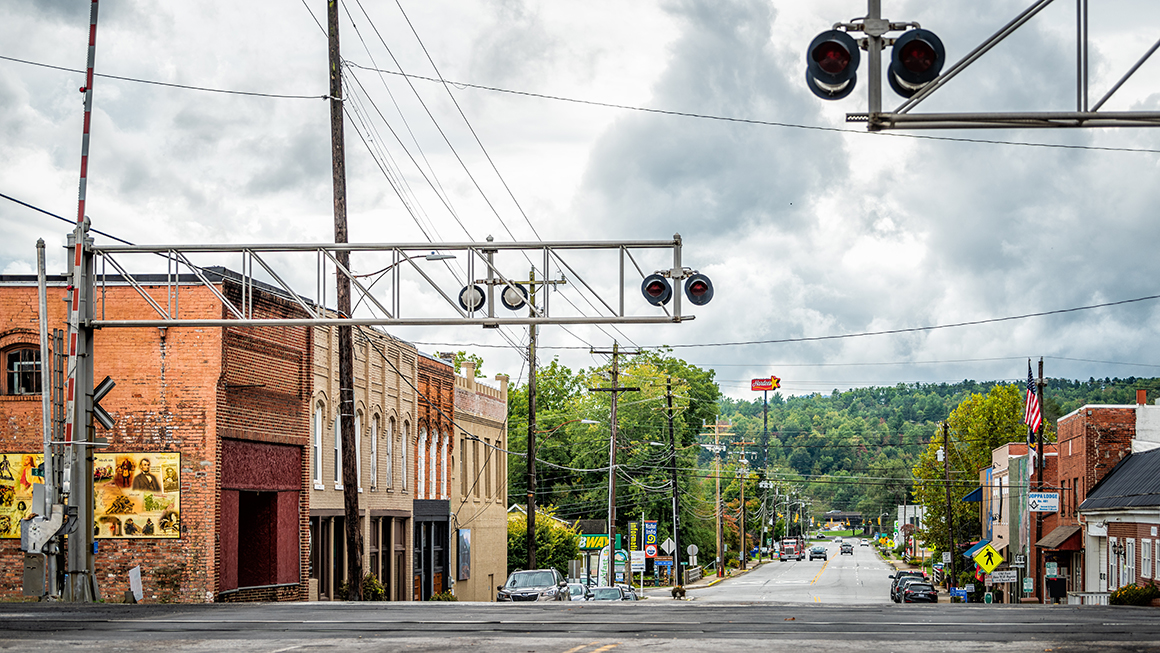
Poverty has persisted throughout the history of the United States, affecting the ability of communities and people to pursue health and happiness. But poverty has also materialized differently across the decades, meaning research institutions and policymakers have had to change how we study, measure, and address it. Not only have our daily lives evolved, but communities, resource allocation, and routes to upward mobility have too.
In their book The Injustice of Place: Uncovering the Legacy of Poverty in America, Luke Shaefer and coauthors Kathryn Edin and Timothy Nelson explore how indicators of well-being, like health and income, are stratified by geography and how aspects of a place, including its history, resources, and infrastructure, can limit mobility.
As part of their research, Shaefer and his coauthors developed an “index of deep disadvantage” which goes beyond income to account for the entrenched power imbalances that continue to shape communities. They then embedded themselves in four communities and interviewed residents with low incomes and community leaders, going through centuries of local history and attending local events to gain a deeper understanding of the historical and structural forces sustaining those disadvantages and shaping communities to this day.
At a recent Urban event, Shaefer reflected on his team’s experiences in these communities. Central to the discussion was that when power and resource imbalances become self-reinforcing, pockets of deep disadvantage and exploitation form. These forces shape communities to resemble colonies within larger social and economic contexts—what the team called “internal colonies.” To address the forces shaping these landscapes of disadvantage and support opportunity and inclusivity in these communities, policymakers will need to think beyond one-size-fits-all solutions toward building on and leveraging these places’ unique assets, resources, and systems.
Historic exploitation can lead to present-day economic stagnation
Over Shaefer and colleagues’ five-year study period, patterns emerged, showing how common it was for a single extractive industry to come to dominate a local economy. Often, the resource that industry extracted—coal, cotton, spinach—brought jobs and opportunity to an area but was controlled by only a few people, stratifying the community by wealth. And these advantaged few frequently used whatever power they had to maintain their businesses, their wealth, and their elite status.
When Shaefer and his team compared historical and current maps of deep disadvantage, there were clear overlaps; though how poverty looks has changed, where it forms is historical. Renowned scholars and activists have long shown this same trend—that power and resources shape American communities through exploitation and oppression. And protecting this volatile structure has often resulted in violence.
In resource-rich rural areas, the relationship between extracted resources and the people controlling their movement came to establish, define, and reinforce local poverty levels and impede people’s ability to achieve economic security. Schaefer says the sometimes violent maintenance of these power dynamics has had lasting legacies in communities. And as Shaefer found, a county’s level of economic mobility is more predictive of the level of violence than poverty, the level of inequality, the number of law enforcement officials, or the unemployment rate.
Today’s challenges with violence are steeped in history. Economically stratified communities today often see disproportionate rates of violence, similar to those communities that relied on a premium resource. Shaefer says that to tackle both disadvantage and violence, policymakers and researchers ought to treat these problems as evidence, rather than as if they were generated from nothing.
Building on local assets is key to upward mobility
Policymakers often are looking at the biggest places with the most people while crafting legislation, but this approach can shut out rural areas, solidifying borders of deep disadvantage from the outside. Rural places have diverse histories, cultures, economies, and physical as well as social infrastructures, and a one-size-fits-most approach means well-intentioned people working toward solutions are often working off incorrect assumptions.
Corianne Scally, senior fellow at the Urban Institute and speaker at the event, sees the challenge of diverse rural places and says building on those unique assets is key to creating flourishing communities. Some policies and programs, including fund matching and competitive grants, are out of reach for rural places because of capacity and difficulty raising the initial capital.
Scally says mobilizing community-minded civic institutions, schools, libraries, religious establishments, and nonprofits puts resources into structures that build social cohesion. Boosting these structures’ capacity means residents’ basic needs are supported by neighbors. Access to health care, nutritious food, and broadband unites people across economic levels and undoes some of the intentional and unintentional harms caused by ill-fitting or elitist policies and programs (PDF)—bolstering residents’ economic success as well as their autonomy, power, dignity, and sense of belonging. And sustaining these aspects of mobility requires measuring and tracking progress, creating data local leaders can use to further narrow inequities in their communities.
Building policies and programs that support communities’ unique needs and aspirations can be a way of rescoping the borders that have reinforced disadvantage to support economic improvement. If the characteristics and history of a place can influence a community’s economic geography, they can also be leveraged to enhance upward mobility.
Let’s build a future where everyone, everywhere has the opportunity and power to thrive
Urban is more determined than ever to partner with changemakers to unlock opportunities that give people across the country a fair shot at reaching their fullest potential. Invest in Urban to power this type of work.